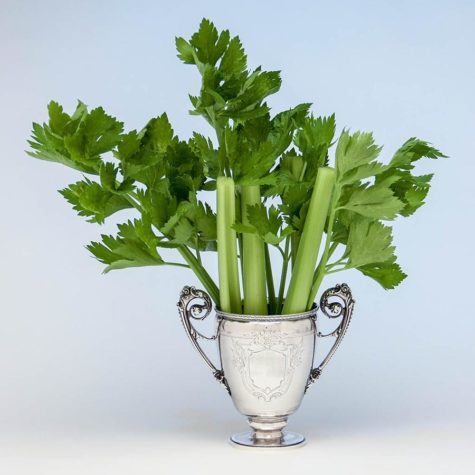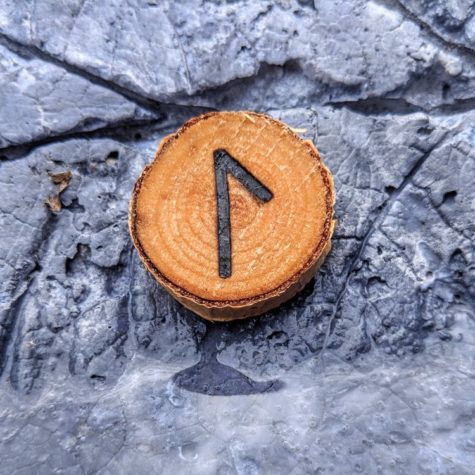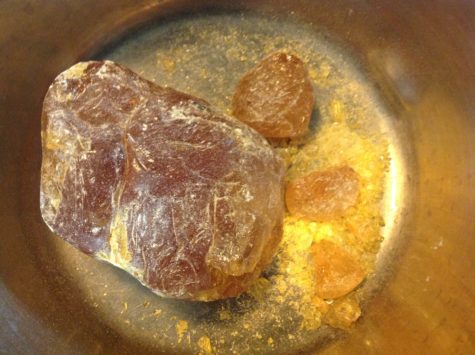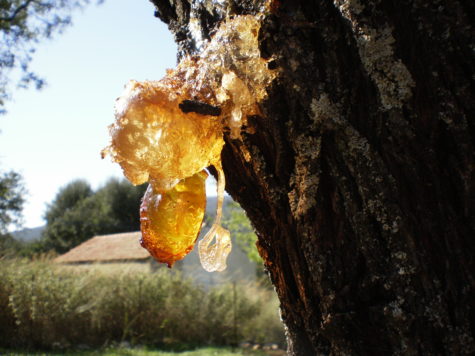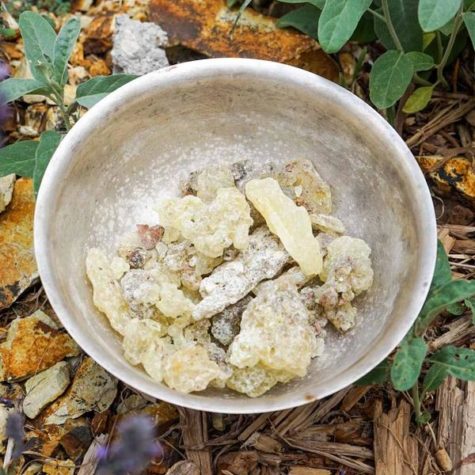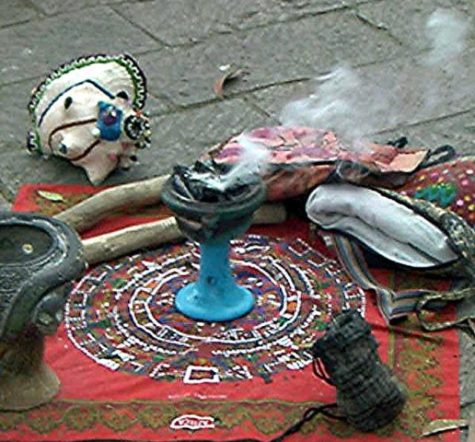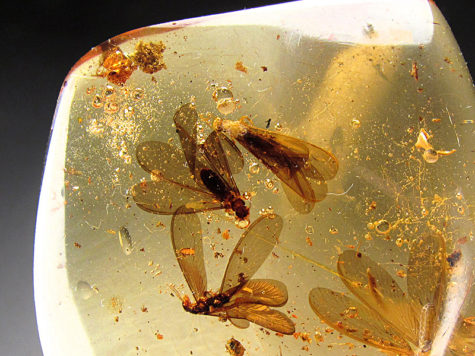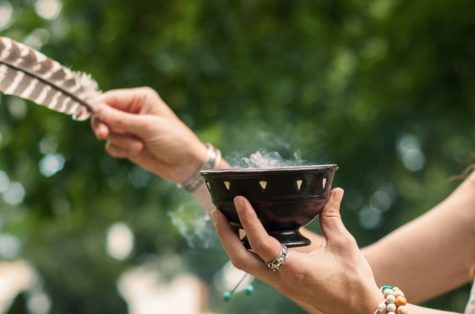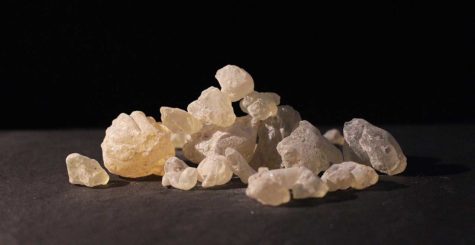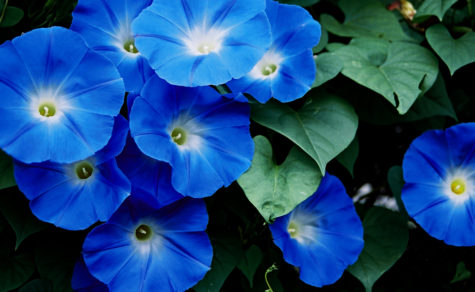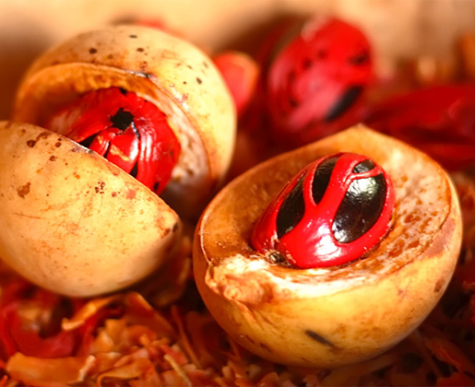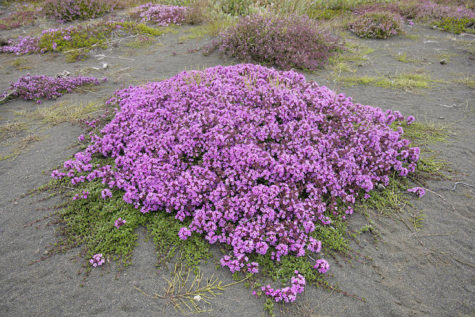Psychic Abilities
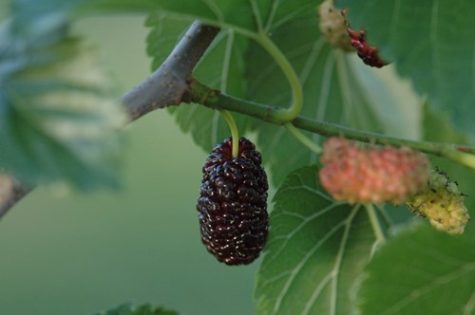
Magickal Uses
- Ruler: Mercury
- Type: Tree
- Folk Name: Blood of a Goose (tree sap)
- Magickal Form: Wood, Berries
- Magickal Properties: Insight, Courage, Focus
Add the berries to success spells for insight and inspiration. A mulberry leaf should be placed near the crib to protect the baby.
Sleep with Mulberry leaves under your pillows to have psychic dreams. Make a tea from the leaves and use the brew to draw protection sigils. Carry the leaves as a talisman for strength and courage. Meditate under the tree to sync your subtle bodies.
Use wood from this tree to craft a wand that will boost your willpower. A Mulberry wand will also bring more focus and clarity to ritual. It helps to center the practitioner, increase magickal awareness, and bring sudden insight, revelation, or Cosmic knowledge.

Mulberry Symbolism
Here are a few key words when it comes to the personality and symbolic meaning of this lovely tree:
- Caring
- Exploring
- Providing
- Nurturing
- Attraction
- Survivalist
- Adventurous
The mulberry is typically a fast growing bush-tree, and it will quickly take over a domain when happy. By association, mulberry tree people will expand, explore, seek, find and spread their wings to great lengths when living in the right environment.
Mulberries are such giving plants. They provide food for humans and animals alike. People connected to the mulberry tree meaning, will have the same tendency to give, provide, protect and nurture others around them.
In this same light, mulberries are natural magnets for all kinds of life. The lovely shade they provide and their delicious berries attract lots of interesting beings…from humans to birds to deer and more.
When connected to the mulberry tree, we can also attract lots of interesting people, nature, experiences, opportunities. Mulberry people will be quite fortunate, and can be like a vortex…calling to themselves who and what they needs.
This is largely due to the mulberry’s ability to remind us all about the understanding of give and take. The mulberry shows us that as we give, energy will be given to us as well. It is the Law of Reciprocation, and he will have an innate understanding about this.
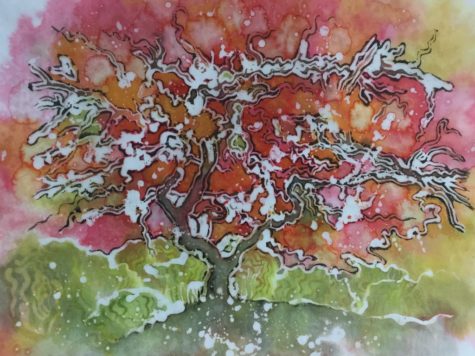
Mulberry Dreaming
There are many conflicting ideas about what mulberries mean in dreams. This is what I found:
- Eating mulberries in a dream mean increase in one’s earnings, praiseworthy religious assiduity, good faith, certitude and leading a healthy life.
- The mulberry tree in a dream represents a wealthy person with many children.
- Mulberry in a dream also could mean borrowing money.
- A mulberry tree in a dream also represents a wealthy and a generous man with a large family.
- Eating black mulberry in a dream also means prosperity.
- Dreaming of eating mulberry means windfall profits.
- Dreaming of mulberry, that disease will prevent you from fulfilling your wish, and friends often visit you, hoping that your help can alleviate their pain and suffering.
- The woman dreamed of eating mulberry, indicating that she could give birth to a child with great achievements in the future.
- Dreaming of eating mulberry foreshadows something that is painful and disappointing.
- A pregnant woman dreaming of eating mulberry, implies that she would have a noble child.
- If you are a married woman, you are about to conceive , or you will give birth to bright, intelligent children in the future, which will make your family prosper.
And then there was this confusing explanation:
This dream has good luck and bad luck. Those who dream of mulberry trees must be young and have no blunders; those who dream of mulberry trees who are thin have less interest and are better. Dreamed that if the mulberry tree withered, the Lord’s good luck. Planting mulberry trees is difficult to protect. Mulberry trees in the rain are difficult to eat. Body tied to mulberry, internal heart injury.
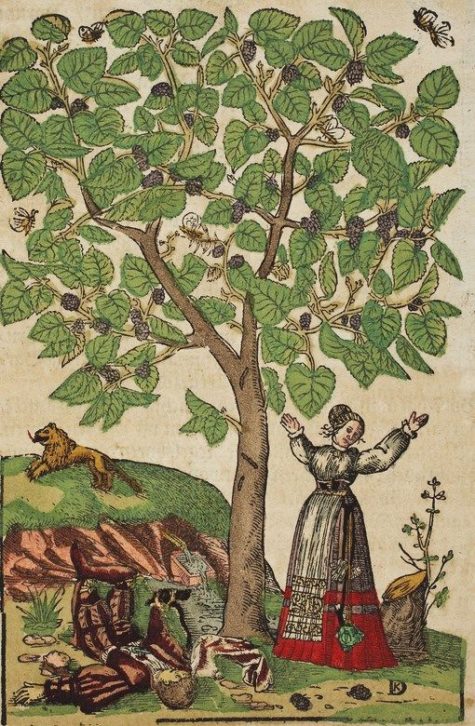
History and Lore
According to a German folklore, the roots of mulberry tree are often used by the devil to polish his boots (and therefore, these trees are associated with evil).
In China, the mulberry is considered the World Tree that connects the Heavens, the Earth and the regions below.
There was a sacred grove of mulberry trees planted outside the eastern gate of the early royal cities, and the tree was associated with this direction because as the “house” of the Mother of the Suns, the Sun rose every day by climbing up the Mulberry tree.
The wood of the tree was used to make bows that “shot” away evil influences that emanated from the compass points.
There is evidence that the Mulberry was revered in Islam too, since the tree can be found close to Muslim sanctuaries.
Mulberry paper is used as vessels for offerings in Shinto shrines. Japanese families often used mulberries as a part of their family crests, and strips of the fiber were hung from sacred trees as prayers. The mulberry leaves were also used to feed silk worms, who produced the fiber to make kimonos fit for the ruling class. In all of these capacities, the mulberry represents support, nurturing and self-sacrifice.
The Romans ate Mulberries at their feasts, as we know from the Satires of Horace, who recommends that Mulberries be gathered before sunset.
We also find mention of the Mulberry in Ovid, who in the Metamorphoses refers to the legend of Pyramus and Thisbe, who were slain beneath its shade, the fruit being fabled to have thereby changed from white to deep red through absorbing their blood.
Pliny speaks of its employment in medicine and also describes its use in Egypt and Cyprus. He further relates:
“Of all the cultivated trees, the Mulberry is the last that buds, which it never does until the cold weather is past, and it is therefore called the wisest of trees. But when it begins to put forth buds, it dispatches the business in one night, and that with so much force, that their breaking forth may be evidently heard.”
It has been suggested that the generic name of the Mulberry, Morus, has been derived from the Latin word mora (delay), from this tardy expansion of the buds.
As the wisest of its fellows, the tree was dedicated by the Ancients to Minerva.
Sir Walter Scott relates in his famous story Ivanhoe that the Saxons made a favorite drink, Morat, from the juice of Mulberries and honey.
There are many famous Mulberry trees in England. Those of Syon House, Brentford, are of special historical interest and include what is reported to be the oldest tree of its kind in England, said to be introduced from Persia in 1548.
It is this particular and venerable tree which forms the subject of an illustration in London’s Aboretum and Fruticetum. Although a wreck compared to its former self, it is regarded as one of the largest Mulberry trees in the country. Its height is given by Loudon as 22 feet, and additional interest is attached to this tree, as it is said to have been planted by the botanist Turner.
In 1608 James I, being anxious to further the silk industry by introducing the culture of the silkworm into Britain, issued an edict encouraging the cultivation of Mulberry trees, but the attempt to rear silkworms in England proved unsuccessful, apparently because the Black Mulberry was cultivated in error, whereas the White Mulberry is the species on which the silkworm flourishes.
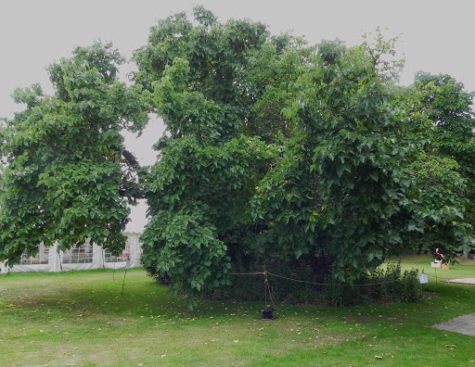
Shakespeare’s Famous Mulberry
Shakespeare is said to have taken a Mulberry tree from the Mulberry garden of James I, and planted it in his garden at New Place, Stratford-on-Avon, in 1609. This also was a Black Mulberry, “cultivated for its fruit, which is very wholesome and palatable; and not for its leaves, which are but little esteemed for silkworms.”
“The Tree,” Malone writes, “was celebrated in many a poem, one especially by Dibdin. But in about 1752, the then owner of New Place, the Rev, Mr. Gastrell, bought and pulled down the house and cut down Shakes’eare’s celebrated Mulberry tree, to save himself the trouble of showing it to those whose admiration of the poet led them to visit the ground on which it stood.”
The pieces were made into many snuff boxes and other mementoes of the tree, some of them being inscribed with the punning motto, “Memento Mori.”
Ten years afterwards, when the freedom of the city was presented to Garrick, the document was enclosed in a casket made from the wood of this tree. A cup was also made from it, and at the Shakespeare Jubilee, Garrick, holding the cup, recited verses, composed by himself in honor of the Mulberry tree planted by Shakespeare:
“Behold this fair goblet: ’twas carved from the tree
Which, oh, my sweet Shakespeare, was planted by thee!
As a relic I kiss it, and bow at thy shrine,
What comes from thy hand must be ever divine.”
“All shall yield to the Mulberry tree;
Bend to the blest Mulberry:
Matchless was he who planted thee,
And thou, like him, immortal shall be.”
A slip of it was grown by Garrick in his garden at Hampton Court, and a scion of the original tree is now growing in Shakespeare’s garden.
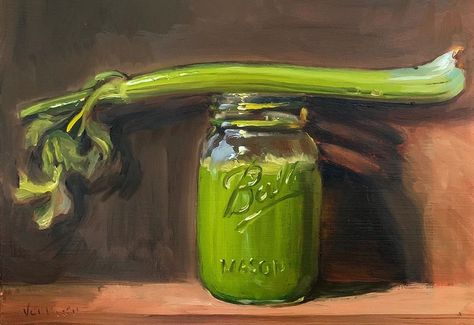
Magickal Uses
- Ruler: Mercury
- Element: Air
- Parts Used: Seed, Stalks, Oil
- Magickal Influences: Psychic awareness, Sleep
It should be mentioned that this is the garden celery under the rulership of Mercury, rather than Wild Celery, which is under the dominion of Venus.
This herbal seed, found in most kitchens, is used as a Visionary Herb. There are forms of divination which recommend drinking a tea of the seed as it opens the mind and allows for better concentration.
Use celery seed to increase male virility. Men can either eat it or add it to poppets in sympathetic magick spells.
To awaken your psychic awareness, crush about a teaspoon of the dried seeds and tie up in a piece of thin, cotton cloth. Inhale the odor and visualize your conscious mind relaxing (perhaps as a fist relaxes), allowing true communication with your psychic mind to occur.
- Rub the oil into fingers or the third eye to increase communication skills.
- Eat raw celery to remove blocks and fears and to promote weight loss.
- Cook the stalks in soup for love.
Folklore recommends putting celery into an herb pillow to induce sleep. Chewing celery seeds reportedly enhances concentration. Or burn them with orris root (iris roots) to enhance psychic powers. Witches flying on their brooms chewed celery seed to prevent dizziness.
Celery is sometimes used as a cure for impotence. Several sticks of celery need to be boiled in a saucepan of water until the celery turns into a pulp. The person with the problem needs to eat this while it is still hot, and can then look forward to a night of successful lovemaking.
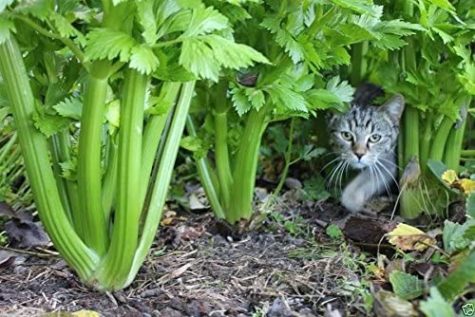
Folk and Other Names
- Aches des Marais
- Ajmoda
- Ajwan
- Apii Frutus
- Apio
- Céleri
- Celeriac
- Fruit de Celeri
- Graine de Céleri
- Karmauli
- Maiden’s Smallage
- Persil des Marais
- Qin Cai
- Smallage
- Selleriefruchte
- Selleriesamen
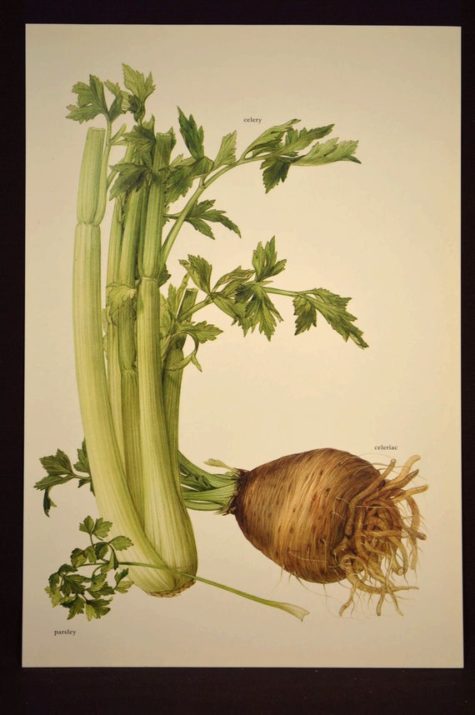
Folklore and History
Celery had its beginning several thousand years ago in shallow swampy areas of mainland China. The plant was prized for its seed, used medicinally and as a flavoring, and mentioned in the writings of Confucius. This would place it at about 500 B.C. on the world timeline.
A similar plant grew in the Mediterranean. It had a strong aroma (its Latin name means “strongly smelling”) and dark green leaves. The Greeks fashioned wreaths from it to adorn the victors in athletic and musical competitions. The Romans considered deemed it an aphrodisiac. And garlands of the leaves were found in Tutankhamun’s tomb.
The modern name “celery” comes from Greek selinon. It was ascribed to Silenus (or Seilenus), the son of a nymph and lustful Pan (or, according to other depictions, Hermes, the messenger of the gods who transgresses all borders).
Silenus, constantly drunk and lecherous, is depicted as pot-bellied with a beefy bald head and often with the ears, tail, and legs of a horse. He was the leader of the lustful horde of satyrs as well as the teacher and companion of Dionysus, the god of inebriation. Half human, half horse, Dionysus symbolizes, among other things, the powerful animal drive. The association of this satyr with celery, emphasizes the plant’s use as an effective agent of sexual potency.
Celery is presented as signifying both death and sensual pleasures in Homer’s epic The Odyssey: celery grows among violets in the meadows on Calypso’s magical island. (The Hellenes classified violets as “erotic plants,” which they dedicated to Priapus, the little deity with the big phallus; Aphrodite, the goddess of love; and Persephone, the goddess of the underworld and the dead.)
In the Odyssey, the enchantress Calypso took in shipwrecked Odysseus and held him enraptured for seven years; she also turned his men into “swine.” Comparative religion studies indicate that Calypso was a goddess of death, as the name suggests (kalypto = to enshroud) and that pigs were sacred to the earth and death goddess of antiquity.
That Odysseus ultimately freed himself from her magic is seen as a victory over death, as in all mythologies the hero, having come dangerously close to death, succeeds in wresting new life from the dark forces. This interpretation lends meaning to the ancient Greek practice of crowning winners of riding and gymnastic games with celery leaves.
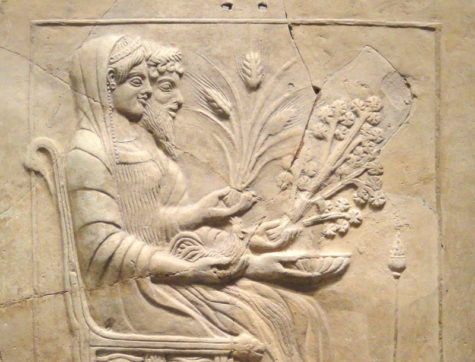
Celery has a long association with death. Ancient Egyptian mummies were often decorated with celery and blue lotus blossoms. Ancient Greeks planted it on graves and used it to season funeral feasts. The Roman Virgil (70–19 BC) described much the same:
“Godly Linus decorated his head with flowers and bitter celery [as a sign of mourning]”
“It is not right to put celery in common dishes because it belongs to funeral feasts.”
The Romans also dedicated celery, as part of the death rites, to Orcus, the god of the underworld, as told by Plutarch (45–120 AD): “We decorate our gravesites with celery.” Given such practices, it was considered a bad omen to see a cart loaded with celery first thing in the morning. And for someone who was marked by death, the Romans said: “There is only celery left for him.” This is an interesting angle given the fact that, like the ancient Greeks, Romans also crowned their victors with celery leaves. And celery, next to dill and coriander, was a favorite condiment in the Roman cuisine.
Celery’s association with death lasted well into our own times. Wend (Slavic) tradition in northern German Spreewald claims that merek (celery) protects against being haunted by the dead.
And the Italian fairy tale “Marianne and the Celery King” tells of a maiden who, attempting to pull a celery bulb from the soil is instead pulled into the ground; “the ground closed over them like water over a stone.” Below the earth, she finds a golden castle and an old, long-bearded hunchbacked man who resembles a celery root: the Celery King, who marries and impregnates her. But he is also an enchanted prince. After the heroine surmounts numerous tasks and challenges she is able to redeem the prince and bring him back to the world above the ground.
Nowadays such stories are given anecdotic value at most. However, traditional customs, folklore, and imaginative perception teach us much about the essence of the plant. In such imaginative terms, let us consider the celery.
Celery is a biennial; its “incarnation” lasts two years. In the first year, it concentrates on absorbing salty, moist earth forces, during which time it swells and becomes lush. During this year there is a clear pull to the dark, cool earth realm, to downward-moving elements and, figuratively speaking, to the grave, bitter death, and the mourning that causes salty tears to flow—but also to the fertile, ever-bearing primal source.
In the second year the plant ascends to the light, shooting up into bloom, opening and branching out as it bathes in cosmic light. The plant now sets a counterpoint to the earthy, moist, salty forces with its “light and fiery” essential oils.
Thus it becomes a plant for victors and heroes, one that overcomes the dark forces, that wards off the evil eye (in Spain), that thwarts the scheming of wicked witches. Even in modern Greece celery blossoms—together with garlic and onion—are hung for good luck. They protect the area where silk worms are being raised; small children are given amulets of celery to keep them from harm.
In Prussia and Pomerania the leaves were stuffed into cracks in floors and walls in pigsties to protect the animals from evil magic—and young married couples were given a piece of root to put in a pocket or a shoe for good luck.
Nicholas Culpeper (1616–1654) recognized the ambivalent nature of celery. He ascribed the plant to the hermaphroditic god, Mercury—the Roman Hermes, who can as easily fly up to the light-filled world of the gods as he can descend to the underworld. Indeed, Mercury-Hermes is the ruler of rising and sinking energy flow. He loosens, cleanses, opens, splits, and removes blockages by bringing everything back into flow.
Culpeper, just as other doctors before and after him, used this mercurial plant to heal “water diseases,” “obstructions” while urinating, and stone ailments, and to activate the liver and the spleen.
Celery works in the microcosm of the human body true to character. It affects the root chakra, the Muladhara, down into the sexual organs and the “salty, watery” urinary organs. Celery can reduce the milk flow for nursing mothers—a compress can actually temporarily reduce the breast size—but can also stimulate the uterus and bring on menstruation.

As “maiden’s smallage” it belonged to the herbs that women took in case of a “belated period,” when they feared they’d been impregnated. German scholar and bishop Albertus Magnus (1200–1280) described the downward pull of the plant: “Celery causes sensual desire to descend from the breasts of wet nurses to the genital area and bring about menstruation.”
It is often the case that emmenagogues work for men as aphrodisiacs, as indicated in such names as “stand-up herb” (Lausitz, Germany), “stand-up wort,” “stud wort” and “buck’s wort.” A fifteenth-century medical book tells us: “So that your wife stays faithful forever mix celery juice and honey and rub your genitals with the mixture. This way she will be satisfied and will want no one else but you.” Consider too this German saying:
Fry me eggs, sweetheart,
with celery and lettuce,
on Sunday we will go courting,
my mother told me this.
This aspect of celery is also well known in France, the country of savoir vivre and l’amour, as in the following: “If a woman knew what celery does to a man, she would be willing to go from Paris to Rome to find it.” And, “If a man knew what celery does for him, he would plant his garden full of it.”
In 14th-century Italy where the rich and curious began to selectively cultivate celery. The stalks became fatter and pleasingly crunchy; they paled from intense dark green to a subtle, delicate hue; and the taste evolved from bitter to pleasingly grassy and citrus-like.
When celery lost its flavorful wild side, it also became less rampant. These new strains were fussy and difficult to obtain, which of course made them irresistible to the elite. By the mid-19th century, celery was so prized by the upper class that serving vases were made specifically for the purpose of displaying it as the centerpiece at fine dinners.
While European epicures were feasting on blanched celery au velouté, American farmers were reveling in how easy it was to cultivate the luxury vegetable in the Great Lakes region. They were resourceful, ambitious, and even competitive when it came to growing celery.
As the celery craze was reaching its zenith in the 1870s, Dutch farmers who knew how to handle wetlands began growing the vegetable in the black, marshy soils of Kalamazoo, Michigan, which became known by the catchy name the Celery City. The streets were littered with hucksters peddling celery from street corners and train stations. As American cultivation improved, celery became an everyman’s item. By then, the British upper classes had moved on to French luxuries like truffles and oysters.
Sources:
- Magickal Aromatherapy by Scott Cunningham
- Publicism
- Encyclopedia of Magickal Ingredients
- Encyclopedia of Herbology
To enhance your natural psychic tendencies and help you tune in to the thoughts and feelings around you, vetiver, sandalwood and rosemary oils are best for psychic awareness spells. For complete relaxation and contemplation, try valerian oil or lavender oil.
- Basic Powers: To manifest psychic powers.
- Pronunciation: “law-gooze”
Useful as a symbol of water, of transitions between states, e.g., birth, life, growth and death. It is a perfect means for building an oath.
Laguz is a rune of intuition and imagination. It is also a feminine rune, but unlike Beorc it represents a strong and assertive female type. Use to contact your intuitive faculties. Increase in vitality and the life force (especially in women). Helps to gather in energies for use by the will.
Guidance through difficult initiatory tests. Increase in vitality and life force. Gathering of amorphous magical power for formation and structuring by the will. Increase in “magnetism”. Development of “second sight”.
The Chant
laguz laguz laguz
l l l l l l l l l
lu la li ke lo
(lug lag lig leg log)
ul al il el ol
lo le li la lu
l l l a a a g g g u u u
l l l l l l l l l
It can be used in conjunction with the symbol, or chanted while visualizing the symbol. The symbol can be etched into a candle while intoning the chant, and then, as the candle burns, the spell is released and sent.
The Statement of Intent
The sea is the cauldron of chaos;
creative matrix,
playground of Ran,
from which human beings came.
This is a modern version of the “Rune Poem” that defines this particular rune. It can be used in combination with the chant, and while creating a talisman or spell that uses the power of this rune.
Runic Posture
Rune Yoga, or Runic postures are used to anchor the energy of the Rune in your physical body. More about them can be found here: Runic Postures.
Assume the recommended runic posture and sing the name of the rune in a non-exhaustive way that you can feel your body vibrating – in magic literature it is called vibrating. It could be that you can hear overtones clearer as usual during vibrating. Take this as a good sign. You are visualizing the rune with your inner eye, as its form is being represented by your body and the energies are flowing through your body.
Stand up with your left arm down at your side. Your right arm is brought up above the shoulder. Bend the elbow as shown in the image above. Hold the palm of the hand flat and level with the ground.
 Because the traditional position seems almost impossible to accomplish, here is a more comfortable variation.
Because the traditional position seems almost impossible to accomplish, here is a more comfortable variation.
Stand up, with your arms extended forward and down. The palms of the hands point towards the ground. Practice also with the palms facing up.
Before practicing a rune it is recommended to know everything on the powers of the rune you want to practice. The flow of energy is different for each rune, a field of research for your sensitivity.
The hand positions, or mudras are effective only after you have anchored the runes in your own aura and body. They can be made silent and unobtrusive.
Sources:
- Understanding Runes
- Asatru
- Futhark
- Flight of the Condor
- A Practical Guide to the Runes
- Esoteric Rune Magic
- Image from Deep Earth Arts
- Ruler: Sun, Solar Deities
- Type: Tree resin
- Magickal Form: Beads, Tears
- Magical properties: Inspiration, Attraction, Invocation, Happiness, Celebration, Contact with astral planes and Exorcism.
- Burn for: Protection, Cleansing, Purification, To promote spirituality, To purify quartz crystals and other stones before use in magic.
Copal is a resin from a tree that is indigenous to Mexico, Guatamala and elsewhere in Central America. It is particularly identified with the aromatic resins used by the cultures of pre-Columbian Mesoamerica as ceremonially burned incense.
Copal is burned on a charcoal tablet, to enhance consecration, spell craft, exorcisms and banishings. It can also be powdered and added to other herbs to focus their energies and lend power. You can also get Copal incense, which is powdered copal in stick form.
Copal is still used by a number of indigenous peoples of Mexico and Central America as an incense and during sweat lodge ceremonies.
About Copal:
Copal is a natural tree resin that is between two states—it is neither a hardened resin nor sap. Copal resin comes from trees in the Buresa family, which is considered a medicinal tree to the Mayas in southern Mexico.
Several species of Central American trees produce resins known as Copal. In Mexico, a species of pitchy pine, Pinus pseudostrobus, is sometimes called Copal, but in Guatemala today (and historically among the ancient Maya) Copal is a resin from plants in the same Burseraceae family as Middle-Eastern Frankincense and Myrrh. These medicinal trees are traditionally used for clearing the body of diseases and also to keep mosquitos away.
Since ancient times, Copal incense has been considered sacred to the people of Mexico, as well as South and Central America. It goes as far back to the Mayan and Aztec cultures. Mass amounts of Copal resin were burned atop the Aztec and Mayan pyramids as offerings to the gods and deities. In the Mayan ruins, Copal was discovered in the burial grounds, proving its spiritual significance.
Copal Varieties and Variations:
Several varieties of Copal are recognized in historic and modern markets in Central and North America, partly based on what plant the resin came from, but also on the harvesting and processing method used.
- Golden Copal resembles Frankincense, being pale-colored, granular, and lightly fragranced.
- Black Copal is dark, heavily-scented and similar to Myrrh.
- White Copal is the more expensive version, also known as Moon Copal.
Wild Copal, also called gum or stone Copal, exudes naturally as a result of invasive insect attacks through the bark of the tree, as greyish drops which serve to plug the holes. Harvesters use a curved knife to cut or scrape the fresh drops off the bark, which are combined into a soft round glob. Other layers of gum are added on until the desired shape and size is achieved. The external layer is then smoothed or polished and subjected to heat to enhance the adhesive properties and consolidate the mass.
The favored type of Copal is white Copal (Copal blanco or “the saint”, “penca” or agave leaf Copal), and it is obtained by making diagonal cuts through the bark into the trunk or branches of a tree. The milky sap flows along the channel of the cuts down the tree to a container (an agave or aloe leaf or a gourd) placed at the foot. The sap hardens in the shape of its container and brought to market without further processing.
According to Hispanic records, this form of the resin was used as an Aztec tribute, and pochteca traders transported from the outlying subject provinces to Tenochtitlan. Every 80 days, so it was said, 8,000 packages of wild Copal wrapped in maize leaves and 400 baskets of white Copal in bars were brought into Tenochtitlan as part of a tribute payment.
Copal oro (gold Copal) is resin which is obtained by the complete removal of the bark of a tree; and Copal negro (black Copal) is said to be obtained from beating the bark.
Black Copal is favored by rural people for their worship services and is usually sold in the form of substantial disks or balls which are burned on a bed of charcoal.
Copal often has inclusions and is sometimes sold as “young amber.” Sometimes insects will become trapped within the resin, just as they sometimes are found in amber. Copal is easily distinguished from genuine amber by its lighter citrine color, and its surface will become tacky with the application of a drop of acetone.
Magickal Uses:
Copal is popular in magical, healing and spiritual uses. It makes a great meditation incense and increases psychic insight. Inhaling its aroma is said to enhance the powers of clairvoyance. It is also used to provide systematic oracles.
- Divination spells that use Copal can be found here: Divination
Copal is added to many love, exorcism and purification incenses. It’s an important ingredient in many rituals. A piece of Copal can represent the heart in poppets. Many churches use this incense before their ceremonies.
Copal, is a “holy incense,” and can be can used for consecration and anointing of pentacles, athames, wands, etc. by passing these objects through its smoke. It can be burned when one is seeking “divine favors”. Like most resins, Copal is burned or smoldered as an incense during spellwork and/or rituals and needs to be burned on charcoal tablets or discs.
Copal makes for an excellent smudge and is commonly used in sweat lodge ceremonial gatherings. This is a wonderful resin to work with and for creating a mellow, magickal atmosphere to work in.
- A recipe for a Copal Ritual Wash can be found here: Magickal Apothecary
Burn this incense for purification and to contact the spirits of the dead. Mexican churches burn Copal on the Day of the Dead to help the souls of the deceased reconnect with their loved ones on the earth plane.
In its native Guatemala, Copal is a holy incense burned when seeking divine favor. Saint statues and other sacred items are blessed by smoking them in Copal. Passing seed corn through the smoke from Copal that was dressed in sacrificial blood before being burned is said to increase its viability and productivity.
Copal is used by the Maya to induce trances and in rites of divination, such as one where fourteen grains of corn are passed through the smoke, then cast on the ground, and the patterns they make are read to foretell the future.
In the US, Christians recite the 23rd Psalm while burning Copal or speak aloud their gratitude for blessings received.
Copal may also be used to draw attention from the opposite sex.
- Carry a piece of Copal in your pocket or in a charm bag especially when the opportunity to meet someone arises.
- Make a “path of seduction” by sprinkling Copal powder to create an aura of romance.
Grind a lump of Copal into powder using a mortar and pestle, visualizing your desires coming true while you’re grinding. Then either burn the powder, or carry the powder with you inside a locket worn around your neck.
It can be used to ward off negative energy by placing small pieces of Copal in with your crystals and then kept in a special place of your choice or wearing around your neck as a magickal sachet. A “sachet of protection” can be made with a combination of Copal, Frankincense, and Myrrh.
It is said that the familiar scent of White Copal helps the souls find their way back during their annual visit home, which is why this resin often burned during spirit workings and Beltane and Samhain rituals. For purification, spirit and ancestral workings, White Copal also is used to induce concentration and mental clarity. A beautiful resin to bring about peace and happiness.
Copal incense is a wonderful energy tool to use during your meditations. It is linked with the crown chakra, deepening your awareness and encouraging pure thoughts during meditation. Copal also helps to strengthen the auric body, removing all energy blockages. It is particularly useful in times of stress or even for alleviating feelings of depression, because it helps you to shift your mindset.
The burning of Copal is believed to call upon the God Tlaloc and the goddess Chalchiuhtlicue. Both of these dieties were associated with fertility and creation. You can light Copal incense as an offering to this God and Goddess, if you feel connected to their energy. Lighting the incense in their honor will invite them into your space and allow you to tap into the power of creation.
The Metaphysical Properties of Copal:
“Real” amber is millions of years old; but there is also another form of amber, young amber. Copal is a very young form of amber. Real amber is wonderful, but it does have that huge age behind it, experience and wisdom which makes it a little difficult to deal with for beginners, and a lot more expensive on your pocket.
Copal, on the other hand, is YOUNG, and that is the operative word and importance of using Copal in magic charms and potions.
It is still far more alive in many ways, far closer to our own states of being as it is on its road into the many millions of years that are its future. Copal offers a bridge between us now, and the infinity of time where our souls reside.
The young Copal is friendlier, lighter and brighter; and together with the absolute healing/protection of all resin and amber, this YOUTH is what reacts with the energy system of a human being and brings re-charging as well as that expectation of eternal life at the same time.
Copal unites the energizing force of the sun with the grounding, transmutive properties of earth. A powerful yet gentle healer and cleanser, Copal draws out and transmutes negative energy of all kinds on all levels. Copal aids in physical self-healing, emotional healing of depression, and environmental clearing.
Created out of tree blood, its very life force, the material trees use to heal themselves, Copal is a healing treasure. It heals physically, emotionally, and environmentally, clearing and cleansing all negativity and illness that exists around it. It is a powerful yet gentle healer, drawing out negative energy and bringing positivity. This gem dispels disease, revitalizing tissue and encouraging physical regeneration.
Copal opens and cleanses all of the chakras. Highly protective, Copal also aids in the manifestation of ideas to reality. The life force trapped within Copal promotes fertility, and its protective and environmental clearing properties make it a good stone to use to prepare a healing or birthing room.
Copal strengthens the Meridians, and helps to keep us grounded so that we can speak from the heart. It also strengthens our control over our minds. Use Copal with the Solar Plexus Chakra to increase confidence, mental clarity, and creative self expression. A chunk of Copal is perfect for your pocket or for selected energy work.
With the life force of eras long past, Copal links the everyday self to the higher spiritual reality. It aids in manifestation, its electromagnetic properties attracting what it is you focus on. Use pieces of Copal in your manifestation grids or rituals.
Copal for Purification:
Copal incense is completely natural incense that is used to purify the energy of spaces, places and objects. It has a clean, light, woody scent that could be compared to pine or turpentine. One of the best Copal uses is burning it to clear away all the negative energy and make positive changes. It brings a very positive and loving energy that will fill your home with peaceful energies.
Try one of these cleansing methods:
- To cleanse your healing crystal jewelry
Hold the piece and allow it to fully submerge in the smoke. You may notice the jewelry moving in a circle or back and forth. Keep it in the smoke until all movement stops.
- For cleaning crystals:
If you’re using Copal incense for cleaning crystals, hold the crystal in the smoke for a few seconds, rotating it so the smoke bathes all sides of the crystal.
- For clearing spaces:
To cleanse a space, allow the Copal incense to fill the room. If you have a feather fan, encourage the smoke to rise into the corners of the room.
Sources:
- Ruler: Sun, Apollo
- Type: Plant
- Magickal Form: Flowers, Vine, Leaves, Seeds
With it’s lovely flowers, heart shaped leaves, and clinging vine, the morning glory plant is definitely something to consider when constructing a love and/or relationship spell.
Grind morning glory seeds to a fine powder and add to flying incense to gain psychic sight.
In the language of flowers, the morning glory represents affection. As a gift, these beautiful flowers can be given in nearly any way imaginable – from the traditional bouquets to pressed or dried single blossoms. When given as an arrangement, you might also take color into account. That is to say, your message may generally express a feeling of affection, but that affection might be tinted with the fiery passion of a red blossom, the calm of a blue one, or the spirituality of a purple one.
In some cultures the ipomoea aquatica variety of morning glory is considered a delightful green that can be used in a number of dishes. They are frequently placed in salads, stir fries, mixed with noodles, or simply used as a garnish.
Although morning glory seeds are considered to be mildly toxic and have side effects such as hallucinations, nausea and drowsiness, many people still consider them to have powerful medicinal effects. The Aztec narcotic ololiuhqui, derived from a wild morning glory, was spread on surface of affected parts for gout, and the seeds were eaten by the Aztecs to bring visions. Their molecular structure resembles that of LSD. The seeds are sold in nurseries for planting.
- NOTE: Using the seeds as a hallucinogenic is not only illegal but they are harmful when ingested.
In China, the morning glory was once considered a highly effective laxative; to the native Indians of Mexico, both ipomoea tricolor and turbina corymbosa were frequently used in rituals and medicine for their supposed soothing properties.
In folk medicine, the boiled leaves of certain species are used as a diuretic; the seeds are chewed to aid in soothing stomach pains, while the whole plant may be cooked and turned into a topical ointment to treat rheumatoid arthritis. Morning glory tea was said to be good for dysentery and diarrhea.
According to Scott Cunningham (Encyclopedia of Magical Herbs) the morning glory or bindweed (Ipomoea spp) are masculine plants, classified as being under the influence of the planet Saturn; the element water, and with powers over happiness and peace.
Cunningham indicates that one can “Place the seeds beneath the pillow to stop all nightmares.” And also that grown in the garden, blue morning glories bring peace and happiness. The root of the morning glory, according to Cunningham, may be used as a substitute for High John the Conqueror root.
Sources:
Mace is a spice made from the waxy red covering which covers nutmeg seeds. It is completely different from the protective pepper spray with the same name.
Mace is produced by, Myristica franrans, a member of the mayriticaceae family. This plant, native to Indonesia, grows into a tropical evergreen tree of up to thirty feet tall.
Mace is actually the aril of the nutmeg seed shell. It is removed from the shell. The broken part of it is generally known as blades. Nutmeg and mace are treated separately. But the history of both of them is related to each other. The color of mace can be different from one to another place. The mace from West Indies is generally yellowish brown. On the other side mace from East Indian nutmegs are actually orange when dried. Mace is sweet and fragrant but quite stronger than nutmeg. The flavor of mace is aromatic, sharp and warm and is sweeter than nutmeg.
Magickal Uses for Mace:
- Planet: Mercury
- Element: Air
- Magickal influences: Psychic awareness
Mace emits a powerful, spicy odor and is well known from its use in cooking. It smells a lot like nutmeg, which makes complete sense, since mace is actually the covering of the nutmeg nut. Because it has this aspect of being like a peel or rind, it is usually considered ruled by Mercury according to sources like Agrippa, even though its scent is warmish, reminding one more of Jupiter or Sun. But Mercury works well for just about any magical purpose, since Mercury rules magic itself.
It is designated as the primary incense in Grimoirium Verum, in particular for censing the Circle. Mace has a more complex scent than nutmeg, perhaps not as flowery: a blend of spice, bitterness, clove, and pine. Mace is one of the winter spices in Wassail bowl, along with cardamom, clove, nutmeg, ginger, cinnamon, and coriander, and is often, along with them, used in prosperity charms. The nice thing about blade mace is that you can be sure there is nothing in it but mace.
To enhance psychic awareness, sit comfortably and inhale the aroma, visualizing it penetrating your conscious mind, relaxing its hold and traveling to your deep consciousness. Psychic awareness will blossom.
Sprinkle some outside doors and windows for protection. Mace also stimulates brain activity and creativity. Smell the spice for inspiration, or mix with success formulas and burn as incense. You can also dust your hands with the powder.
Mace at one time found use in a money-drawing douche among prostitutes, who mixed the powder with distilled vinegar and water. It was said that a man whose member came in contact with a woman who had thus “dressed her pussy” would be under her control, and would seek her out and pay her well for repeated trysts.
The money drawing powers of mace makes sense because mace grows attached to the nutmeg, itself a celebrated money drawing spice.
- Ruler: Fairies, Venus
- Element: Air
- Planet: Mercury
- Type: Herb
- Magickal Form: Leaf – fresh or dried, Essential Oil
Thyme was called thymos by the Greeks, which meant “fumigate”. They associated thyme with valor in battle, and the restoration of physical power. Roman soldiers were known to bathe in a decoction of thyme before going into combat, to boost strength and courage. The Sumerians used it as an antiseptic, and in Egypt, thyme was one of the herbs which was used in the mummification process.
Thyme cleanses and renews the spirit and calls angelic forces to one’s aid. Long utilized in the energy cleansing and clearing of temples in Greece, thyme can be burned or strewn to disperse stagnant vibrations and invite the new. Bathe in the oil for serious purification after you have come in contact with death.
Thyme can be used in healing rituals, or to bring about restful sleep. Women who wear thyme on their person are irresistible to men, and carrying sprigs in your pocket aids in developing your psychic abilities. Burn some thyme to help boost your courage before confrontations. Add this herb to foods to increase your awareness, sight, and memory.
It is also used in love spells to invoke more gentleness and understanding into a relationship.
Attractive to the fairy folk, thyme can be grown in the garden to entice their plant blessings, and a little thyme under the tongue allows one to see them more clearly.
An herb that helps connect with psychic consciousness, thyme in a divination formula aids the mind in understanding and deciphering psychic visions and impressions.
Burn as incense or wear to attract good health. Place a sprig beneath your pillow to ensure dream-free sleep. It is frequently burned before ritual to cleanse the area. Burn when asking advice of loved ones who have passed on.
Compiled from various sources.
